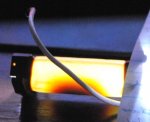- Joined
- Jan 7, 2007
- Messages
- 6,309
- Points
- 83
John -- Sometime post a couple of your pictures here
showing your setup. Some people here might be able
to help. I suppose CO2 would only make a puddle for
your meters.
The SSY-1, as I recall, was a rangefinder light source.
Hitting it that fast likely shortened it's life.
I believe Meredith Instruments has tubes and maybe
a new Q cell. Realignment might be tricky. DrSam G
might be able to help.
HMike
showing your setup. Some people here might be able
to help. I suppose CO2 would only make a puddle for
your meters.
The SSY-1, as I recall, was a rangefinder light source.
Hitting it that fast likely shortened it's life.
I believe Meredith Instruments has tubes and maybe
a new Q cell. Realignment might be tricky. DrSam G
might be able to help.
HMike
Last edited:











